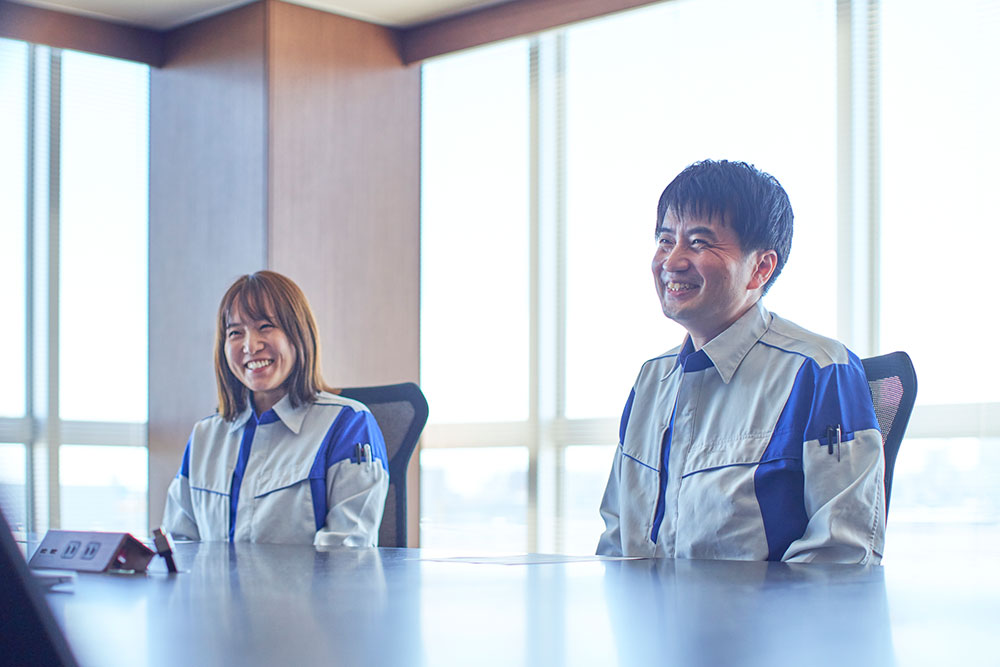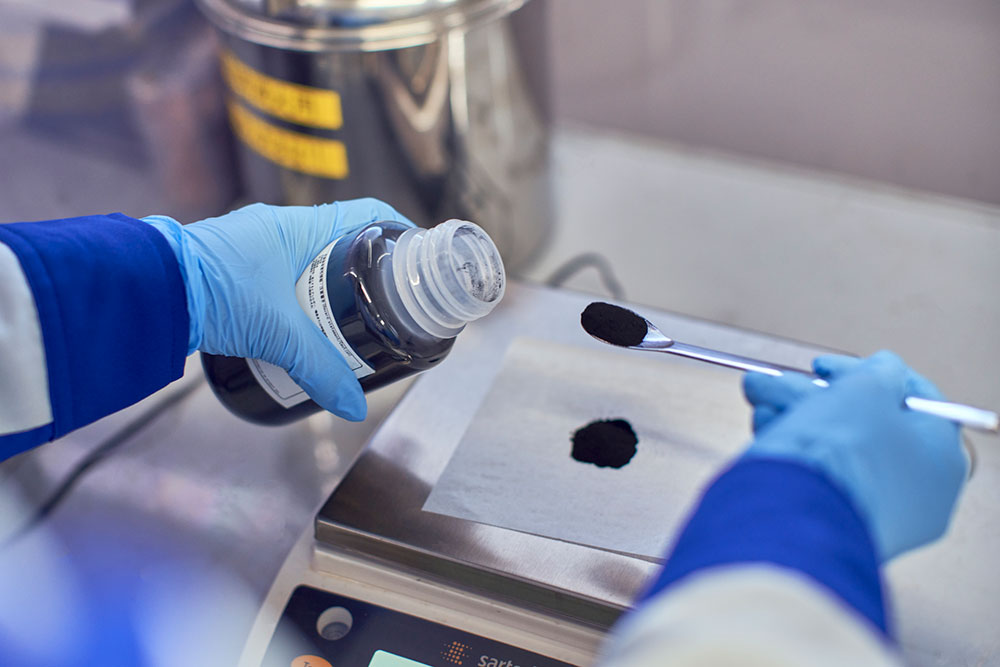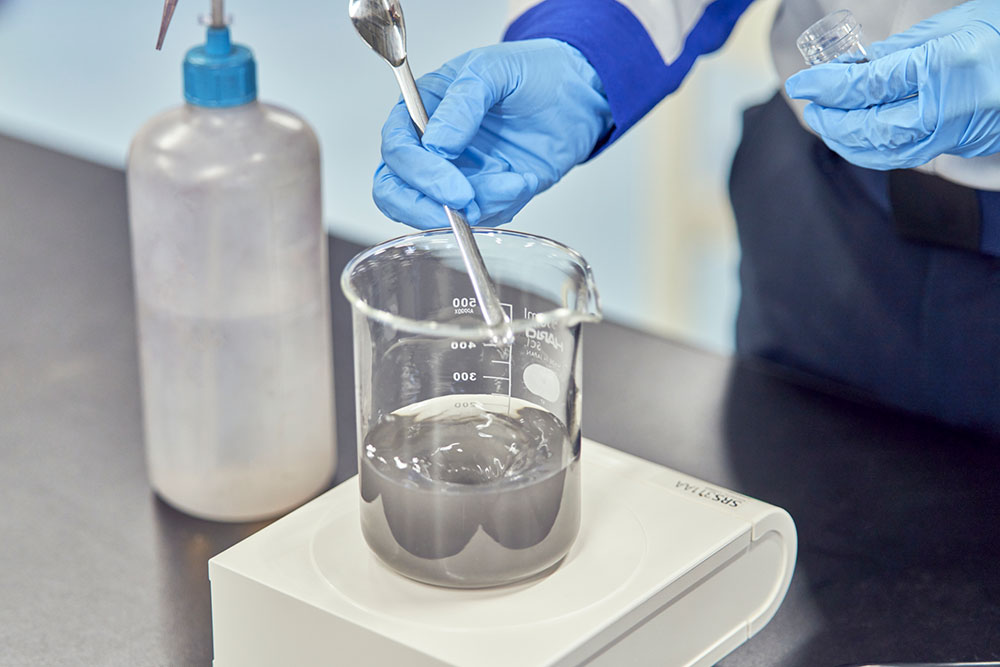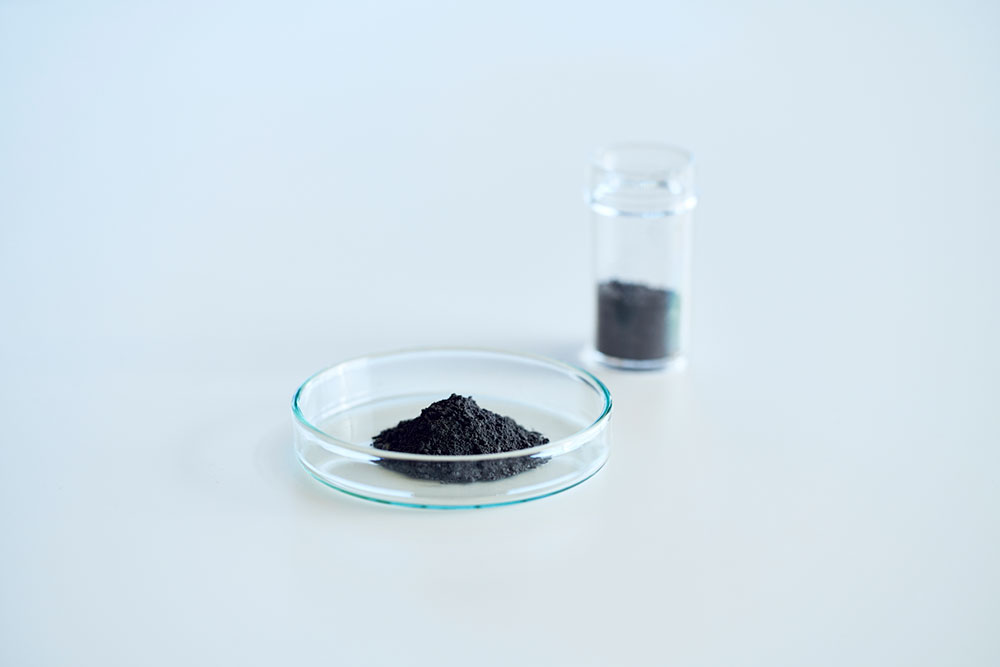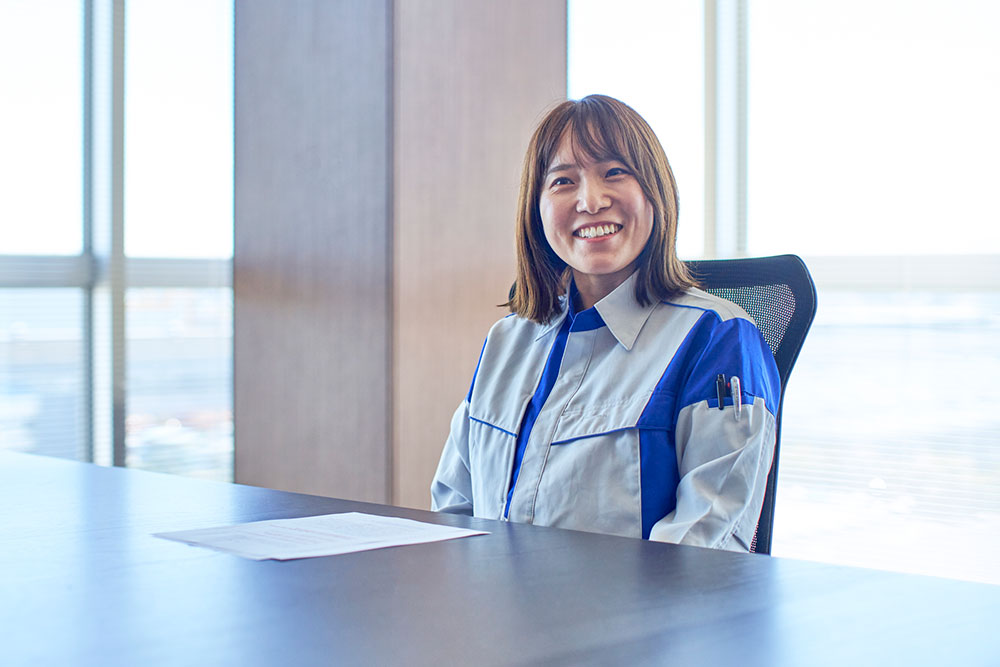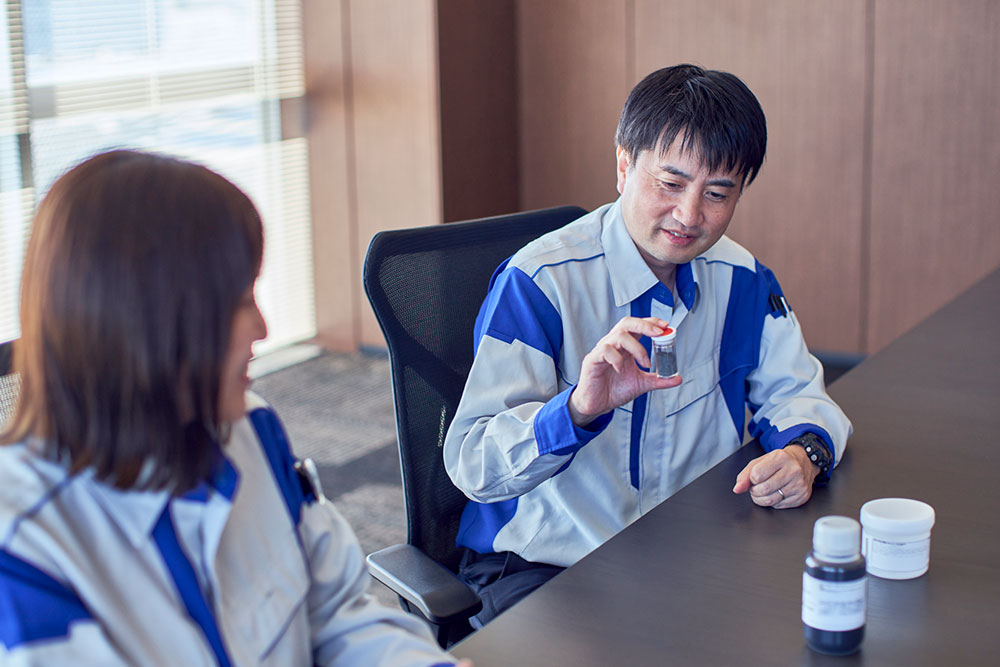CLOSE
About Elements
TANAKA is a leading company in the field of precious metals.
Advanced materials and solutions that support societal progress, the development stories behind them, the voices of engineers, and our management philosophy and vision—
Elements is an online media platform that shares insights that lead to a better society and a more prosperous future for the planet under the slogan “Mastering Precious Metals.”

The world’s first High-Entropy Alloy Powder made exclusively of precious metals
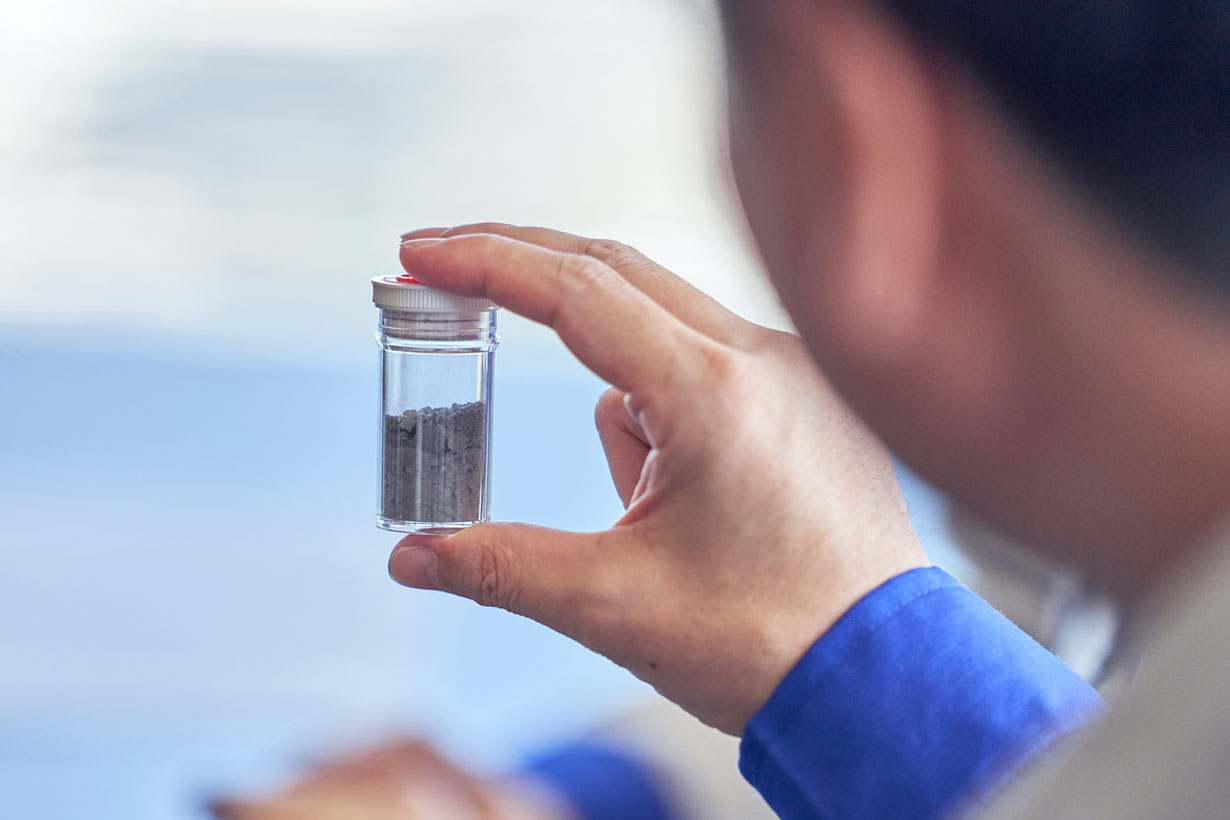
Have you heard of high-entropy alloys yet? TANAKA Kikinzoku Kogyo K.K., which operates the manufacturing business of TANAKA Precious Metals, is courageously taking on the challenge of this new category. TANAKA Kikinzoku Kogyo succeeded for the first time in the world in developing High-Entropy Alloy Powder using only precious metals and has obtained patent rights (Patent No. 7300565) for more than five types of precious metal alloy powder that are also used in this product, and also for their manufacturing method. We interviewed Takuya Hosoi and Yoshie Kondo of the Chemical & Refining Company, who were responsible for the development of this unique new alloy material.
What is the High-Entropy Alloy, which is now in the spotlight?
─TANAKA Kikinzoku Kogyo has now achieved an accomplishment that is unprecedented worldwide: the development of a high-entropy alloy powder composed entirely of precious metals. First of all, please tell us more about High-Entropy Alloys.
▲ [From left] Yoshie Kondo, Advanced Film Development Sec., and Takuya Hosoi, Manager, Automotive Sensor Materials, both belonging to Shonan Plant, Chemical & Refining Company, TANAKA Kikinzoku Kogyo K.K.
Hosoi: Although parts of the definition are not quite clear yet, an alloy that contains five or more elements in equal proportions of atomic number and in which no single element accounts for more than half of the total is called a High-Entropy Alloy.
Kondo: Since the concept was first announced about 20 years ago, it is a fairly recent development in the long history of metals, and it is becoming a trend as universities and companies inside and outside Japan are beginning to actively research it.
Hosoi: To begin with, an alloy is a metal that is a mixture of a metal with one or more metals and/or non-metals. There are further sub-classifications of alloys, such as solid solutions that are fused together at the atomic level and compounds (intermetallic compounds) of metals. Taking solid solutions as an example, in most cases, each element generally has a different atomic size, so when different elements are mixed at the atomic level, a distortion in the atomic arrangement occurs. As a result, it becomes difficult for atoms themselves to move, and phenomena such as the enhancement of strength and heat resistance take place.
Kondo: For example, we are familiar with the alloy called stainless steel. Iron, the main component of stainless steel, is a rust-prone metal, but it can be made rust-resistant by adding chromium to the alloy. Stainless steel also exhibits a variety of different properties when the proportions of the components in its blend is changed or elements such as nickel are added. Not by simply mixing the components but by alloying processes such as heating, properties including strength, heat resistance, chemical resistance and electrical conductivity can be improved. For this reason, a variety of alloys have been developed and spread throughout the world according to their applications.
Hosoi: The new high-entropy alloys contain a mixture of five or more different atoms, and to put it simply, the atoms are as cramped together as passengers on a super-crowded train. If this happens, the atoms may exhibit characteristics beyond their previously known properties, and they are said to have the potential to create a new effect called the “cocktail effect,” which is not possessed by any of the constituent elements.
Precious metal specialists take on the challenge of developing a completely new high-entropy alloy
─What was the impetus for your development efforts?
Hosoi: The world is changing at a dizzying pace. We have developed materials and products that satisfy our customers by quickly obtaining accurate information and understanding their needs. However, with such drastic changes continuing to take place, we felt that it would be difficult to create what will be required in the future if we continue to take the same stance as before, which is based on needs.
So, we went back to the basics and considered what a good product is and what we can do to make it better. As a result, we concluded that a good product is “one that contributes to society through products that make customers happy.” As a precious metal manufacturer, we reaffirmed that we wanted to contribute to society in the field of precious metals.
TANAKA Kikinzoku Kogyo has the higher concept of “mastering precious metals.” We decided to create something new, something that no one had ever achieved before, and as such we set out to “master precious metals” in the field of precious metal powders, which has long been a specialty of our department. We wanted to prove that we could create something new if we applied the seeds we had accumulated up to now—something like the foundation for development—while also utilizing the technology we had cultivated. This may have been what motivated us to develop this product.
─That’s when you turned your attention to high-entropy alloys.
Hosoi: Yes. High-entropy alloys have been the subject of considerable attention in recent years, and in addition to the possibility of unconventional properties emerging, they have also been studied in the field of precious metals, where interesting properties have been identified. However, there were still many research applications, and no examples of established mass production in the powder field could be found. Our department specializes in product development and mass production technology tailored to customer needs. If we could contribute to this area—we thought—it would be to commercialize high-entropy alloy powders with sufficient productivity and quality, and to provide materials that all customers can evaluate without hesitation. Of course, we thought that in the case of Tanaka Precious Metals, it would be a high-entropy alloy made of precious metals only.
Kondo: Each of the precious metals has various superior properties by itself. There were hopes that by turning them into high-entropy alloys, they would have even better properties.
Hosoi: Furthermore, once we establish a technology that allows us to make multiple metal alloy powders, it will be relatively easy to handle a lesser number of compositions. Where needs arise, it should be possible to speedily respond in the case of any of the various compositions. Moreover, our curiosity was piqued by the thought that, while it is difficult to produce a fine, uniform powder, it would be amazing if we could produce a uniform high-entropy alloy powder containing five or more elements.
Our accumulated expertise and technological capabilities enable speedy production
─You succeeded in producing a prototype in a short period of time, about one month from the start of the prototype production. What do you think was the reason for this?
Hosoi: Powders with a single metal or an alloy with metals have already been developed and produced by our company for many years and are used as raw materials for automotive exhaust gas sensors, resistors, and water electrolysis catalysts. In addition, precious metals are handled as mass-produced products, and raw materials for high-entropy alloy powders were relatively easy to obtain. Furthermore, as we had accumulated expertise in manufacturing in each metal powder—although only as single metal powders—and we were able to proceed with development while referring to our experience.
▲ Prototypes and fabrication are performed in a laboratory at the Shonan Plant (Hiratsuka City, Kanagawa Prefecture) of TANAKA Kikinzoku Kogyo K.K.
Kondo: In fact, it might be better to say that it was “done serendipitously” within about a month after the start of prototyping. If we had not succeeded at that time, we might not have made it this far because we would have said, “This is not easy after all.” Including this, we feel that the successful production of our first prototype in such a short period of time was due to the expertise that many people in our company have previously accumulated.
There were times when the prototype’s conditions were subsequently changed, for example, increasing the amount of processing or changing its form, which resulted in a less uniform alloy. In addition, we used five precious metal elements, Pt (platinum), Pd (palladium), Ru (ruthenium), Ir (iridium), and Rh (rhodium), out of which only Ru has a different crystal structure from the others, which was a challenge. Since elements with the same crystal structure tend to form alloys with each other, we managed to fabricate the alloy in a stable manner by changing the size of the raw materials and the pretreatment conditions through a process of trial and error. In developing this project, we were able to accumulate a considerable amount of data, including failures, which we intend to use effectively in the future.
─The speed with which you were able to get a patent registration was also very fast, wasn’t it?
Kondo: Yes. This was my first patent application and I filed it in February 2023, and it was registered in June. I was surprised that the approval was faster than expected.
Hosoi: Since a patent must state its differences from prior art—if there is any prior art—it is common to have multiple rounds of communication with the patent office during a patent examination. However, the examiner carried out the registration assessment for this alloyed powder without making a single remark. I was also happy because I had a very difficult time applying for patents in the past.
▲ The first high-entropy alloy powder composed only of precious metals to be successfully fabricated. Consists of five elements: Pt (platinum), Pd (palladium), Ru (ruthenium), Ir (iridium), and Rh (rhodium)
Increasing expectations for the One and Only Alloy
─What do you think about the future development?
Hosoi: We have made prototypes of alloy powders of various precious metal species in various powder sizes. However, first of all, we have established mass production capability for a high-entropy alloy powder formed of a quintet of metals—Pt, Pd, Ru, Ir, and Rh—with a grain size of approximately 1 μm, and we have decided to offer samples of these powders.
Kondo: Currently, we are conducting research while assuming to some extent what kind of applications and in what fields this high-entropy alloy powder can be used, and considering what kind of characteristics it has and what kind of characteristics are needed at that time.
Hosoi: We believe that high-entropy alloy powders can be used for a variety of applications. For example, they can be mixed with organic materials and pasted onto conductive films. They can also be used for structures and other applications through powder metallurgy. We will continue to search for specific applications while looking for superior properties, but we believe that this material can be used as a raw material for structures that require uniform compositional distribution.
─Expectations are rising for this unprecedented alloy.
Kondo: We have a monthly development progress report in the plant, and engineers from other departments also ask us, “Do you have a follow-up report yet?” We are very grateful to have so many people interested in this alloy. As we learn new things, we will continue to share them and hope to move forward, step by step. Now that we have obtained a patent, we hope to have more opportunities to make our customers aware of this alloy.
Hosoi: By establishing the process, we have reached the stage where we can provide this alloy in a relatively trouble-free way to customers who wish to “evaluate” or “try” it. We, as a materials manufacturer, cannot evaluate the final product in real-world applications. However, we believe that by providing this completely new raw material to customers who have been troubled by the fact that “the raw material they need does not exist,” new value will be created, which in turn will lead to our making a “contribution to society through precious metals,” as we envision.
There are many things we still need to explore. For example, if we could respond to detailed requests for a slight shift in the composition of this alloy, it would be easier to meet a wider range of needs. We will continue to meet the challenge without giving up.
◆ ◆ ◆
High-Entropy Alloy Powder, a material made only of precious metals, has just been born. It has many possibilities and is expected to be used in a wide range of applications. In addition to its high potential to provide a solution to current issues, it may also bring out superior properties not found in existing alloys and create value that will be a game-changer in many industries.
■Related Information
https://tanaka-preciousmetals.com/en/products/detail/high-entropy-alloy-powder/
![]()








